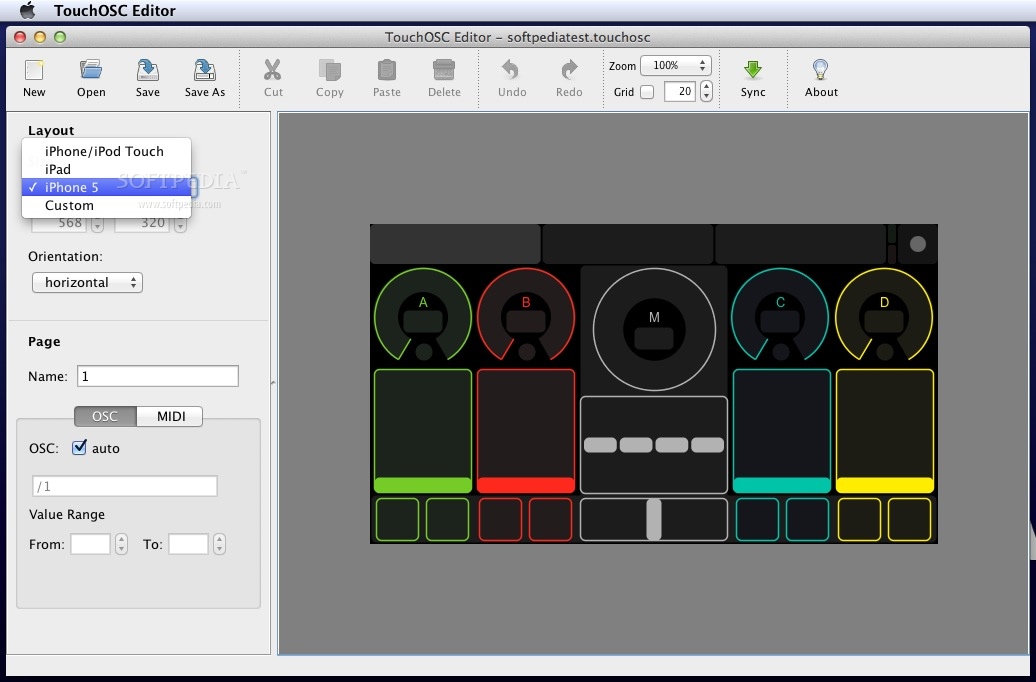

- #TOUCHOSC EDITOR FOR WINDOWS 10 FOR ANDROID#
- #TOUCHOSC EDITOR FOR WINDOWS 10 PRO#
- #TOUCHOSC EDITOR FOR WINDOWS 10 SOFTWARE#
They were less expensive than Lemur, some even free, and like Lemur had their GUI editing facility built into the app. Further investigation managed to unearth several other apps with extensive capability comparable to Lemur.
#TOUCHOSC EDITOR FOR WINDOWS 10 FOR ANDROID#
Unfortunately, Lemur is not available for Android devices.
#TOUCHOSC EDITOR FOR WINDOWS 10 SOFTWARE#
However, Lemur has now morphed into an impressive software app for the iPad/iPhone, and costs a more reasonable $24.99.

However, its price tag is way beyond my pay grade (I am a retired college music professor after all). Despite its lack of tactile feedback, its ability to configure a plethora of controls is impressive. Recently, on eBay, the JazzMutant Lemur caught my eye. I am always on the lookout for configurable performance interfaces that allow for combinations of buttons and sliders. This can be also expensive both for composers and potential performers. Though I have often been tempted to design my music for a particular control surface, doing so drastically reduces the opportunity for performance.

The challenge of hardware control surfaces, especially compared to mouse-on-screen, is that the widget count is fixed per control device, and often only vaguely corresponds to compositional requirements. (My music is mostly slow and meditative, so my need for precise, slow-moving control with immediate visual feedback favors long-throw sliders over knobs and other options.) Though I have used FLTK and Python widgets (the latter for Sugar activities for children), CsoundAV, Lettuce and Cabbage, and even ASCII keyboards, I favor hardware MIDI devices-particularly control surfaces consisting of sliders and/or buttons. As a consequence, my Csound works are nearly all realtime and require performance interfaces. To me, performance has a human and ever-changing face, exhibiting both variability and personal interpretation. A Bit of Personal BackgroundĪs a classically-trained musician, my interest has always been in live performance. csd that verifies communication between the TouchOSC app, TouchOSC Bridge and Csound. Included is also an explanation and available download of a package by the author including TouchOSC layouts as well as a test. Problems and solutions for working with Android and MIDI are set forth in this article. One comes with “Osc’elot” - it’s perfect for controlling a smaller mixer like Mindmeld Mixmaster JRĪnother is for Controlling Iverson - a 16x8 grid step sequencer.This article is about the author's work emphasizing Android devices as MIDI controller interfaces for Csound. There’s a few OpenStageControl sessions in the wild.
#TOUCHOSC EDITOR FOR WINDOWS 10 PRO#
Open “ in this browser, matching the ip address of your Surface Pro 7 and the port you used in Open Stage Control (If you don’t run any other webservers, you can use 80, then you don’t have to enter a port number in the browser). I haven’t tried them all - a recent one should work.

I would just turn off the windows firewall for my local network.Īll you need on the Surface 3 is a browser. These ports must be open in you firewalls on both machines. “8880” is the port Open Stage Control listens to. “127.0.0.1:8881” is the network address of the listening udp port of VCVrack/OSC’elot - the “send” in Open Stage Control. You set these ports in Openstage Control. Other scetches use OSC over udp, the VCVrack module “OSCelot” default is port 8881 for input and 8880 for output.


 0 kommentar(er)
0 kommentar(er)
